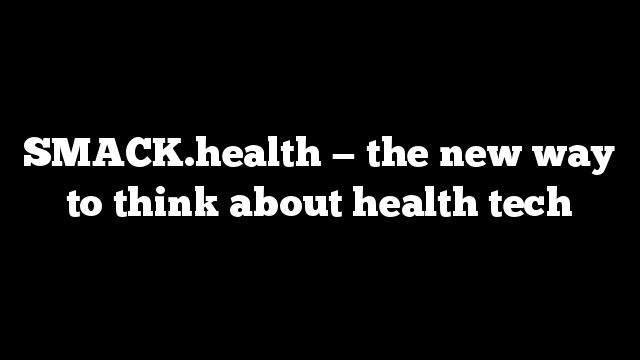 I’ve also been having a bit of fun with creating a new site called SMACK.health, which uses the new .health domain extension. Well you knew you needed both a new definition to replace the fuzzy term “digital health” and .com is so 1999! But what am I talking about when I use the term SMACK.health, and why? I was asked to write a piece about technology in health for USA Today spin-off, and I’ve repurposed it here to celebrate the official .health launch.
I’ve also been having a bit of fun with creating a new site called SMACK.health, which uses the new .health domain extension. Well you knew you needed both a new definition to replace the fuzzy term “digital health” and .com is so 1999! But what am I talking about when I use the term SMACK.health, and why? I was asked to write a piece about technology in health for USA Today spin-off, and I’ve repurposed it here to celebrate the official .health launch.
There’s a big change coming to our health care experience — driven by technology. Health care is moving from a point-in-time event to one of continuous care. Think of your last doctor’s visit. You probably had a few minutes with a rushed clinician and were sent on your way. The next steps, such as correctly interpreting the instructions, getting prescriptions filled and figuring out next steps was left largely on you. Yet, most conditions, like diabetes, heart disease and asthma, require continual monitoring and management to avoid painful and costly complications. In fact, what happens outside the doctor’s office is more important than that meeting in it.
A new way
Relying on the old point-in-time interventions doesn’t work. To this point, most hospitals and doctors have only had information tools that record what they did in the visit or during the procedure. Instead, SMACK.health technologies will enable clinical teams to perform continuous care. SMAC stands for Social & Sensors, Mobile, Analytics and Cloud. These are the underlying technologies behind what we now use every day — Skype, texting, WhatsApp, iTunes, Facebook, Google, Amazon, et al. To reach patients wherever they are, thousands of relatively new companies are building similar technologies and services that will help a combination of today’s clinicians and tomorrow’s automated artificial intelligence systems manage patients — and help patients manage themselves. And hopefully they’ll be doing it with a big dose of empathy — hence our adding the “K for Kindness” to the SMACK.health lexicon.
Information influx
The other big change is going to come in what we use those technologies to do. For sure, patients are already way, way better informed than they were 15 or 20 years ago. They can access great content online, including information shared by other patients on sites like PatientsLikeMe, MedHelp and Smart Patients. Patients and their caregivers will use those tools to be better informed about their care and inform each other and their clinicians. But that’s not all. We are already seeing services like American Well, Teladoc and DoctorOnDemand (sometimes provided by current health insurers and hospitals) enabling video visits. A whole range of cameras, sensors and medical tools will make those services, and a host of others, better able to connect patients with clinical solutions.
What’s next
We are also going to use new technology to diagnose and treat. Computer algorithms from companies like PhysIQ are already remotely reading abnormal heart rates via disposable patches. Soon, a range of devices will be in the bathroom reading your spit, poop, blood, breath and vital signs. Companies like Philips and Nokia and startups Kinsa, uBiome and CloudDX are bringing them to market. They’ll first be used by the sickest patients, but soon they’ll be mainstream consumer goods. Finally, mental health, physical therapy and more are already being delivered by avatar-based artificial intelligence like Ginger.io and Reflexion Health.
The health care system faces huge changes adapting to the realities of these new technologies. But when it does, it will improve the experience for patients and clinicians. And it will bring patients and society better health outcomes.
Matthew Holt is the publisher of THCB and Chair, Health 2.0 Conferences
